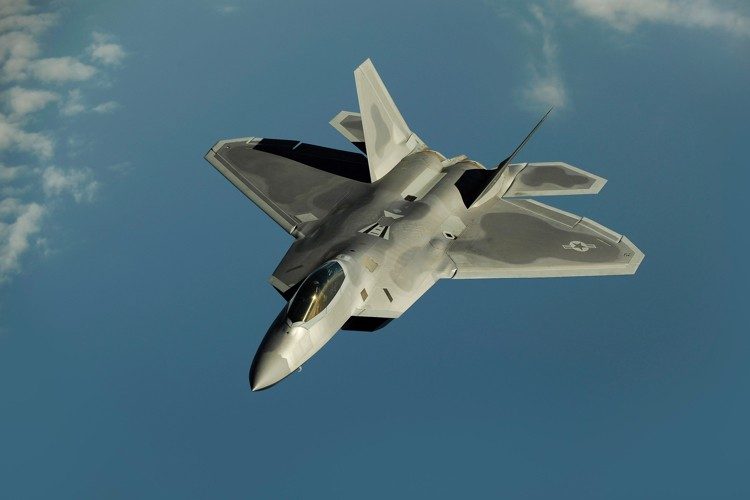
In the latest of an ongoing series of incidents where Russian aircraft entered the Alaska Air Defense Identification Zone, U.S. F-22 Raptors from the North American Aerospace Defense Command (NORAD) intercepted a pair of Russian Tu-95 “Bear” bombers escorted by Su-35 fighters 30 nautical miles off Alaska’s coast on October 19.
Stars and Stripes reported that, although the Russian aircraft came close to Alaska, they never entered U.S. airspace, which extends 12 nautical miles from U.S. shores.
The report cited NORAD, which said the aircraft “loitered within” the Alaskan Air Defense Identification Zone for about 90 minutes. The zone is a stretch of mostly international airspace some 200 nautical miles off the Alaskan coast where U.S. officials expect aircraft to identify themselves in the interest of national security.
“NORAD forces remain on alert 24/7/365 to respond to potential threats to Canada and the United States,” Air Force General Glen VanHerck, the commander of NORAD and the U.S. Northern Command, told Stars and Stripes. “The agility and readiness of our personnel ensures we are successful in addressing potential aerospace threats with the appropriate response at the right time.”
The report also cited a statement released on Twitter on October 20 by Russia’s military, saying that the bomber formations flew the scheduled 12-hour training flight over “neutral waters of the seas of Bering, Okhotsk, as well as Chukchi and Beaufort seas.” The statement acknowledged that the Russian aircraft were intercepted by F-22s for a portion of the flight.
The Air Force Times on October 20 cited a series of tweets from NORAD noting that, in addition to Tu-95 bombers and Su-35 fighters, it also identified a Russian A-50 airborne early warning and control aircraft supporting the other Russian planes. The U.S. F-22s were supported by an E-3 AWACS airborne early warning and control aircraft and a KC-135 Stratotanker refueling aircraft.
The Air Force Times reported that NORAD regularly intercepts Russian aircraft in the international airspace around Alaska, noting that most such encounters occur without serious incident.
The U.S. Air Force also has conducted multiple bomber flights in areas around Russia, over such areas as the East Siberian Sea, Ukraine, and the Black Sea. Sometimes the Russian response to such flights can be overzealous. The United States accused two Russian fighter jets of conducting an “unsafe and unprofessional” interception of a B-52 Stratofortress bomber in August over the Black Sea, flying within about 100 feet of the bomber.
Tensions sometimes arise from these encounters, noted the Times. In August, the U.S. military accused Russian military planes of conducting unsafe intercepts of B-52s as they were being flown over all 30 NATO nations.
Stars and Stripes also cited a NATO statement such a Russian-NATO encounter in August, when a Russian Su-27 fighter jet entered Danish airspace while intercepting a U.S. B-52 bomber over the Baltic Sea.



